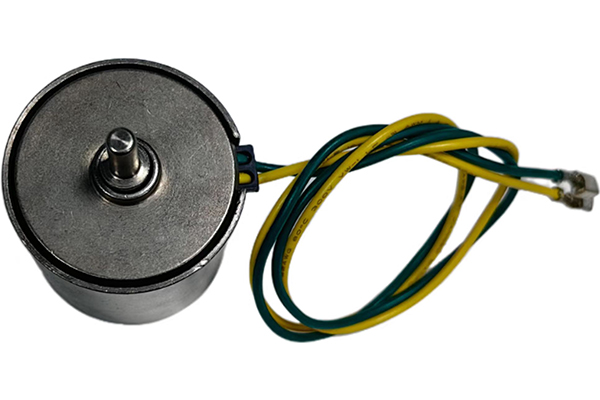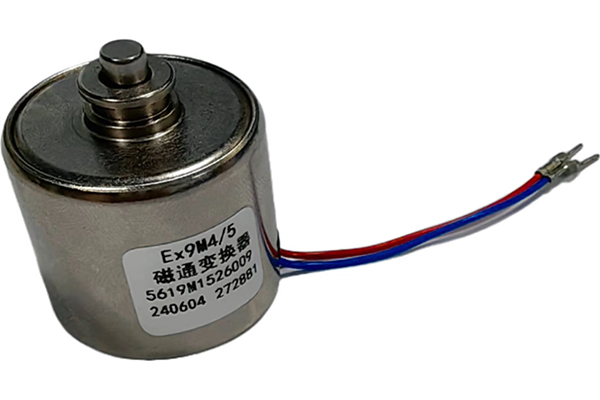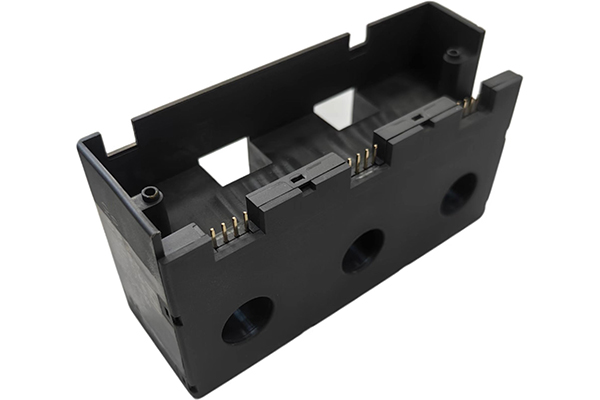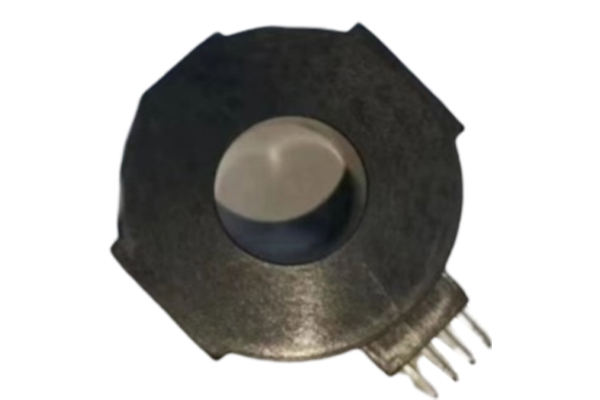Advantages of transformer measurement, how many do you know?
Release Time : 2025-06-04
As an indispensable device in the power system, the transformer has many professional and detailed advantages, which are explained from different aspects as follows:
1. Voltage regulation and power transmission
Voltage regulation and matching: The transformer realizes voltage conversion through the principle of electromagnetic induction. It can increase the voltage output by the power station to reduce the loss in long-distance transmission, and can also reduce the high voltage to a voltage level suitable for electrical equipment and users. For example, in long-distance power transmission, the step-up transformer can increase the voltage to several thousand volts, reducing line current and energy loss; at the user end, the step-down transformer can convert high voltage to low voltage such as 220V to power lighting or small motors.
Improve transmission efficiency: In the process of power distribution, the transformer realizes voltage control in different regions through the step-up or step-down function, so that power can be transmitted to farther places and reduce energy loss. For example, the step-up transformer can increase the voltage to a suitable level, reduce the voltage loss in the transmission line, and improve the efficiency of power transmission.
Protect electrical equipment: The transformer can stabilize the voltage output and prevent voltage fluctuations from causing damage to electrical equipment. For example, for sensitive electronic devices such as computers and medical equipment, transformers can provide stable voltage through step-down or step-up functions, reduce equipment failure rates, and extend service life.
2. Safety and reliability
Reduce electrical risks: Transformers reduce the risk of electrical fires, electric shocks, and equipment damage by reducing high-voltage power to a safer level. For example, in industrial or civil power systems, transformers can reduce high voltage to a safe voltage range to ensure the safety of personnel and equipment.
Improve equipment reliability: Transformers with good electromagnetic compatibility can work normally in complex electromagnetic environments and are not affected by electromagnetic interference, thereby improving the reliability of equipment. For example, in industrial environments with strong electromagnetic interference, transformers can ensure the stability of signal transmission through filtering, shielding and other designs.
Comply with safety standards: Transformer design complies with relevant electromagnetic compatibility standards and regulatory requirements to ensure the legality and market competitiveness of the product. For example, transformers need to pass electromagnetic compatibility tests to verify their performance in complex electromagnetic environments to ensure compliance with international or national standards.
3. Efficiency and energy saving
High-efficiency design: Modern transformers have an efficiency of up to 99%, and reduce energy loss by optimizing core materials, winding structures and other designs. For example, the use of high magnetic permeability core materials can reduce the excitation current and reduce no-load losses; optimizing the winding layout can reduce resistance losses and improve overall efficiency.
Energy-saving operation: The transformer reduces energy loss in power transmission through the voltage regulation function and realizes more efficient use of energy. For example, in long-distance power transmission, the step-up transformer can reduce line current and reduce resistance losses; at the user end, the step-down transformer can optimize voltage matching and reduce equipment energy consumption.
Reduce maintenance costs: Dry-type transformers use air or other gases as cooling media and do not use insulating oil. They have the advantages of fire prevention, environmental protection, and easy maintenance, reducing maintenance costs. For example, dry-type transformers do not need to replace insulating oil regularly, reducing maintenance frequency and cost.
4. Environmental adaptability
Fire prevention and environmental protection: Dry-type transformers do not use insulating oil, avoiding the risk of oil fires, and are suitable for occasions with high safety requirements. For example, in environments with strict fire prevention requirements such as high-rise buildings and underground power stations, dry-type transformers can provide safer power solutions.
Adapt to complex environments: Transformers with good electromagnetic compatibility can reduce the impact of electromagnetic radiation on the surrounding environment and human body, meeting environmental protection and health requirements. For example, in environments sensitive to electromagnetic radiation, such as residential areas or hospitals, transformers can reduce the level of electromagnetic radiation by optimizing the design.
Extend service life: H-class insulation dry-type transformers use insulation materials with better moisture resistance to improve operating reliability and extend service life. For example, the moisture resistance index of H-class insulation materials is better than that of B-class insulation materials, and the electrical resistance is also significantly improved, which can operate stably in humid environments.
5. Technical optimization and innovation
Comprehensive testing and evaluation: The comprehensive characteristic testing technology of transformers can comprehensively test parameters such as no-load loss, short-circuit impedance, ratio error, insulation resistance, etc. to ensure product quality. For example, through strict testing processes, defects in design or manufacturing can be found, and adjustments and improvements can be made in time.
Magnetic measurement and evaluation: Through the measurement of magnetic parameters such as hysteresis loops, magnetic permeability, and excitation current, the performance of transformer core materials can be evaluated and the design can be optimized. For example, selecting core materials with low remanence and small coercive force can reduce hysteresis loss and eddy current loss and improve transformer efficiency.
Intelligence and miniaturization: With the introduction of new materials and intelligent technologies, the performance of transformers has been continuously improved, with smaller size, higher efficiency and stronger reliability. For example, manufacturers such as Yongce Group have promoted the development of transformers in a more efficient and intelligent direction through technological innovation.
6. Practical application advantages
Simple structure and low loss: Single-phase transformers have a simple structure, small size and low loss, and are suitable for use in low-voltage distribution lines with small loads. For example, in rural power transmission and distribution systems, single-phase transformers can convert high-voltage power supply into single-phase low voltage for lighting or small motors.
Widely applicable to three-phase power supply: Three-phase transformers are composed of three single-phase transformers of the same capacity, mainly used for boosting or reducing voltage in three-phase power supply systems, and have a wide range of applications. For example, in substations, industrial and mining enterprises, construction sites and other occasions, three-phase transformers can convert high voltage into 380V low voltage to provide power supply for electrical equipment.
Rapid detection and direct reading: In response to the demand for low-value resistance detection, instruments such as TZ-type contact resistance testers can quickly calibrate and directly read low-value contact resistance to improve detection efficiency. For example, in railway systems, the detector can be used to detect low-value resistances such as contactor contacts and transfer switch contacts to ensure safe operation of equipment.
1. Voltage regulation and power transmission
Voltage regulation and matching: The transformer realizes voltage conversion through the principle of electromagnetic induction. It can increase the voltage output by the power station to reduce the loss in long-distance transmission, and can also reduce the high voltage to a voltage level suitable for electrical equipment and users. For example, in long-distance power transmission, the step-up transformer can increase the voltage to several thousand volts, reducing line current and energy loss; at the user end, the step-down transformer can convert high voltage to low voltage such as 220V to power lighting or small motors.
Improve transmission efficiency: In the process of power distribution, the transformer realizes voltage control in different regions through the step-up or step-down function, so that power can be transmitted to farther places and reduce energy loss. For example, the step-up transformer can increase the voltage to a suitable level, reduce the voltage loss in the transmission line, and improve the efficiency of power transmission.
Protect electrical equipment: The transformer can stabilize the voltage output and prevent voltage fluctuations from causing damage to electrical equipment. For example, for sensitive electronic devices such as computers and medical equipment, transformers can provide stable voltage through step-down or step-up functions, reduce equipment failure rates, and extend service life.
2. Safety and reliability
Reduce electrical risks: Transformers reduce the risk of electrical fires, electric shocks, and equipment damage by reducing high-voltage power to a safer level. For example, in industrial or civil power systems, transformers can reduce high voltage to a safe voltage range to ensure the safety of personnel and equipment.
Improve equipment reliability: Transformers with good electromagnetic compatibility can work normally in complex electromagnetic environments and are not affected by electromagnetic interference, thereby improving the reliability of equipment. For example, in industrial environments with strong electromagnetic interference, transformers can ensure the stability of signal transmission through filtering, shielding and other designs.
Comply with safety standards: Transformer design complies with relevant electromagnetic compatibility standards and regulatory requirements to ensure the legality and market competitiveness of the product. For example, transformers need to pass electromagnetic compatibility tests to verify their performance in complex electromagnetic environments to ensure compliance with international or national standards.
3. Efficiency and energy saving
High-efficiency design: Modern transformers have an efficiency of up to 99%, and reduce energy loss by optimizing core materials, winding structures and other designs. For example, the use of high magnetic permeability core materials can reduce the excitation current and reduce no-load losses; optimizing the winding layout can reduce resistance losses and improve overall efficiency.
Energy-saving operation: The transformer reduces energy loss in power transmission through the voltage regulation function and realizes more efficient use of energy. For example, in long-distance power transmission, the step-up transformer can reduce line current and reduce resistance losses; at the user end, the step-down transformer can optimize voltage matching and reduce equipment energy consumption.
Reduce maintenance costs: Dry-type transformers use air or other gases as cooling media and do not use insulating oil. They have the advantages of fire prevention, environmental protection, and easy maintenance, reducing maintenance costs. For example, dry-type transformers do not need to replace insulating oil regularly, reducing maintenance frequency and cost.
4. Environmental adaptability
Fire prevention and environmental protection: Dry-type transformers do not use insulating oil, avoiding the risk of oil fires, and are suitable for occasions with high safety requirements. For example, in environments with strict fire prevention requirements such as high-rise buildings and underground power stations, dry-type transformers can provide safer power solutions.
Adapt to complex environments: Transformers with good electromagnetic compatibility can reduce the impact of electromagnetic radiation on the surrounding environment and human body, meeting environmental protection and health requirements. For example, in environments sensitive to electromagnetic radiation, such as residential areas or hospitals, transformers can reduce the level of electromagnetic radiation by optimizing the design.
Extend service life: H-class insulation dry-type transformers use insulation materials with better moisture resistance to improve operating reliability and extend service life. For example, the moisture resistance index of H-class insulation materials is better than that of B-class insulation materials, and the electrical resistance is also significantly improved, which can operate stably in humid environments.
5. Technical optimization and innovation
Comprehensive testing and evaluation: The comprehensive characteristic testing technology of transformers can comprehensively test parameters such as no-load loss, short-circuit impedance, ratio error, insulation resistance, etc. to ensure product quality. For example, through strict testing processes, defects in design or manufacturing can be found, and adjustments and improvements can be made in time.
Magnetic measurement and evaluation: Through the measurement of magnetic parameters such as hysteresis loops, magnetic permeability, and excitation current, the performance of transformer core materials can be evaluated and the design can be optimized. For example, selecting core materials with low remanence and small coercive force can reduce hysteresis loss and eddy current loss and improve transformer efficiency.
Intelligence and miniaturization: With the introduction of new materials and intelligent technologies, the performance of transformers has been continuously improved, with smaller size, higher efficiency and stronger reliability. For example, manufacturers such as Yongce Group have promoted the development of transformers in a more efficient and intelligent direction through technological innovation.
6. Practical application advantages
Simple structure and low loss: Single-phase transformers have a simple structure, small size and low loss, and are suitable for use in low-voltage distribution lines with small loads. For example, in rural power transmission and distribution systems, single-phase transformers can convert high-voltage power supply into single-phase low voltage for lighting or small motors.
Widely applicable to three-phase power supply: Three-phase transformers are composed of three single-phase transformers of the same capacity, mainly used for boosting or reducing voltage in three-phase power supply systems, and have a wide range of applications. For example, in substations, industrial and mining enterprises, construction sites and other occasions, three-phase transformers can convert high voltage into 380V low voltage to provide power supply for electrical equipment.
Rapid detection and direct reading: In response to the demand for low-value resistance detection, instruments such as TZ-type contact resistance testers can quickly calibrate and directly read low-value contact resistance to improve detection efficiency. For example, in railway systems, the detector can be used to detect low-value resistances such as contactor contacts and transfer switch contacts to ensure safe operation of equipment.







